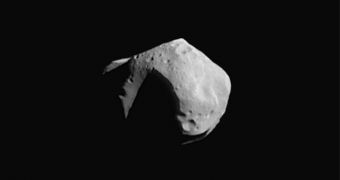An asteroid impact would be so devastating to our planet, that the survival of life itself on it would be jeopardized. Although, as far as we know now, the threat of that happening in the short term is fairly small, British experts from the Stevenage space company EADS Atrium are currently working on a new spacecraft, a “gravitational tractor” that would have the ability to deter a space rock from a dangerous course years before it comes within close range of the planet. Weighing as much as ten tonnes, the new instrument of averting apocalypse would rely solely on gravity to do its job.
According to the BBC News, the idea is still in its early days, and a prototype of the new defense system has yet to be developed. The effort, however, is not ludicrous and makes so much more sense once you take into account the figures set forth by NASA's Near-Earth Object Program. The figures show that 1,069 Potentially Hazardous Asteroids (PHA) lurk in our cosmic surroundings, either of which could be nudged off its current orbit by a large number of factors.
“Frankly I thought it was crackers. I thought it would never work,” the Head of Exploration and Business at EADS Astrium, Dr. Ralph Cordey, said in talking about the time when he first heard the idea. It was proposed by two NASA astronauts, Edward Lu and Stanley Love, a few years ago. But, the EADS chief admitted after giving the concept much thought, he realized that there was nothing far-fetched about it, and that it made sense in the long run. Factors such as the weight of the spacecraft and its potential fuel source were also considered before the project was declared feasible.
The expert also revealed that that new defense system would act on a potential asteroid from a very close distance, of just 48 meters. The ship would exert a small gravitational pull on the incoming object, and then the pair would steer sufficiently to ensure that the rock passes within safe distance of the planet. The thing about this approach is that the craft would have to be launched at least 15 years in advance of the incoming threat, which means that it may already be too late. The time frame is needed so that its small gravitational nudge is sufficient enough to deter the threat by a sufficiently large factor.
“We have done quite a lot of design work on this with the European Space Agency and we believe this would work just as well on a big solid iron asteroid as well as other types,” Cordey concluded.

 14 DAY TRIAL //
14 DAY TRIAL //